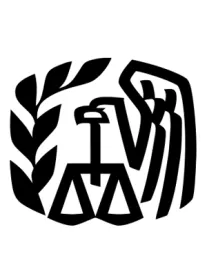On May 18, 2021, the Internal Revenue Service (IRS) issued much-anticipated Notice 2021-31 (the Notice) regarding the Consolidated Omnibus Budget Reconciliation Act (COBRA) premium subsidy provisions of the American Rescue Plan Act of 2021 (ARPA). Under ARPA, a 100% COBRA premium subsidy and additional COBRA enrollment rights are available to certain assistance eligible individuals (AEIs) during the period beginning on April 1, 2021, and ending on September 30, 2021. The US Department of Labor (DOL) has previously issued model notices and a set of FAQs regarding the COBRA premium subsidy. The IRS has now issued additional FAQs in the Notice Below is a summary of the provisions of the Notice most relevant to employers and plan sponsors.
IN DEPTH
WHO IS ELIGIBLE?
An AEI is defined as anyone who is eligible for COBRA from April 1, 2021 to September 30, 2021, due to a reduction in hours or involuntary termination (explained below). The subsidy is available until an AEI is eligible for other group health plan coverage—including Medicare. An individual may become an AEI more than once (e.g., due to successive losses of coverage under the individual’s or a spouse’s plan). A reduction of hours or involuntary termination of employment that follows an earlier qualifying event (such as a divorce) does not make a qualified beneficiary from the first qualifying event an AEI.
WHAT CONSTITUTES A REDUCTION IN HOURS OR INVOLUNTARY TERMINATION?
A furlough is considered a reduction of hours, so long as the employer and employee intend to maintain the employment relationship; this is true regardless of whether the employer initiated the furlough or the individual participated in a “window” arrangement. (A window program could include, for example, a voluntary severance program pursuant to which an employee with an impending termination could make an election to terminate employment within a specified period of time.) A work stoppage due to a strike or lockout is also considered a reduction of hours, so long as the intent is to continue the employment relationship.
TIP: Check with employee benefits counsel as to what constitutes a “window program.” Not every voluntary window arrangement will qualify.
Under the ARPA and the Internal Revenue Code of 1986, as amended, severance from employment caused by the exercise of unilateral authority of the employer where the employee was willing and able to continue working constitutes an involuntary termination. In addition, if an employee terminates employment for good reason—due to “employer action that results in a material negative change in the employment relationship” or constructive discharge—then that is also an involuntary termination. Termination due to retirement, concerns about workplace safety due to a health condition, lack of childcare or death generally do not constitute an involuntary termination. Termination for cause can be involuntary, unless for gross misconduct.* A decision by an employer not to renew an employee’s contract or an employee’s decision to participate in a “window program” under a severance offer is still involuntary.
*TIP: Be careful about using the “gross misconduct” exception as a reason to avoid offering COBRA. This exception to COBRA eligibility has been much-litigated. The standard for gross misconduct is inconsistent across states and represents a high bar for employers.
WHICH COVERAGE MUST BE OFFERED?
COBRA premium assistance is available for COBRA continuation of any group health plan except a health Flexible Spending Account (FSA) (under §106(c) offered under a 125 cafeteria plan) or a Qualified Small Employer Health Reimbursement Arrangement (QSEHRA) (under §9831(d)). Coverage under a vision-only or dental-only plan or a health reimbursement account (HRA) (unless integrated with Medicare) is included under the subsidy. Retiree health coverage is also eligible coverage as long as it is offered under the same group health plan as the coverage made available to similarly situated active employees.
A plan sponsor can allow AEIs to enroll in coverage different than the coverage the individual was enrolled in at the time of the qualifying event, but the different coverage cannot exceed the premium of the coverage of the AEI at the time of the qualifying event. The DOL clarified that the COBRA premium assistance cannot be used as a credit toward coverage with a greater premium amount, either. Coverage with a premium greater than the premium of the coverage the individual was enrolled in at the time of the qualifying event is not eligible. If an employer no longer offers the health plan that previously covered the AEI, then the individual must be offered the opportunity to elect the plan that a similarly situated active employee would have been offered.
WHEN DOES THE AEI’S COBRA PREMIUM ASSISTANCE PERIOD BEGIN?
An AEI is first entitled to receive COBRA premium assistance as of the first applicable period of coverage beginning on or after April 1, 2021. COBRA premium assistance is available for periods of coverage from April 1, 2021, through September 30, 2021, if the election for COBRA continuation coverage is made after September 30, 2021, but during the applicable 60-day election period. In that case, the AEI is entitled to COBRA premium assistance through the earlier of the last period of coverage beginning on or after September 30, 2021, or the date that COBRA continuation coverage expires.
WHEN DOES THE SUBSIDY END?
AEIs may receive COBRA premium assistance until the earliest of (1) the first date the AEI becomes eligible for other group health plan coverage (with limited exceptions) or Medicare coverage; (2) the date the AEI ceases to be eligible for COBRA continuation coverage or (3) the end of the last period of coverage beginning on or before September 30, 2021 (even if such period extends past September 30, 2021).
The death of an AEI does not end the eligibility for COBRA premium assistance for the deceased AEI’s qualified beneficiary spouse and dependent children. Once subsidized COBRA continuation coverage ends with the last period of coverage beginning on or before September 30, 2021, coverage for an individual who was an AEI automatically continues with unsubsidized COBRA; the payment for the first subsequent period of coverage should be timely paid according to the terms of the plan (taking into account any applicable COVID-19 relief extensions).
WHEN DO AEIS HAVE TO ELECT COBRA?
The Notice clarifies that the following individuals are entitled to an extended election period to elect COBRA continuation coverage:
-
A potential AEI if the qualifying event occurred before April 1, 2021, and the individual has not yet elected COBRA continuation coverage (including for an individual who has an open COBRA election period as of April 1, 2021). Such individuals may elect retroactive COBRA continuation coverage under the original COBRA election period available prior to the ARPA extended election period; however, COBRA premium assistance does not apply to periods of coverage prior to the first period of coverage beginning on or after April 1, 2021.
-
A qualified beneficiary (spouse or dependent child) who did not elect COBRA continuation coverage by April 1, 2021, but who would have been an AEI if the election were in effect, even if the employee previously elected self-only COBRA continuation coverage.
-
In addition, a qualified beneficiary whose qualifying event was a reduction in hours or an involuntary termination must be offered the extended election period with respect to any health coverage the qualified beneficiary was enrolled in prior to the qualifying event and for which the individual does not have a COBRA election in effect on April 1, 2021, even if the qualified beneficiary previously elected COBRA continuation coverage with respect to other coverage in which the qualified beneficiary was previously enrolled.
HOW DOES ALL THIS WORK WITH THE OUTBREAK PERIOD EXTENSIONS?
The notice of an extended election period must have been furnished by May 31, 2021. An individual who receives the notice must elect COBRA continuation coverage no later than 60 days after the notice is provided in order to receive COBRA premium assistance starting on or after April 1, 2021. Although the outbreak period extensions do not apply to the COBRA premium subsidy’s notice or election deadlines, the extensions apply to premium payments for any retroactive periods of coverage prior to the subsidy period that an AEI elects. However, an AEI who elects the COBRA subsidy but declines to elect retroactive COBRA coverage may not elect retroactive coverage after the end of the 60-day extended election period.
HOW DO WE GET REIMBURSED?
In a divergence from the Obama administration’s American Recovery and Reinvestment Act of 2009 (ARRA) COBRA subsidy, the amount of the credit is the premium that would have been charged to an AEI (including a possible 2% administrative cost), but does not include the amount of any subsidy the employer would have otherwise provided.*
However, if a plan that previously charged less than the maximum premium allowed under COBRA increases the premiums for similarly situated covered employees and qualified beneficiaries, the subsidy applies to the increased premium amount. For individual HRA coverage, the credit is limited to 102% of the amount actually reimbursed to the AEI. Details are provided on who is eligible to claim the credit (in most cases, the employer); when it is available (generally, at the beginning of a coverage period for which an AEI does not pay a premium) and how to claim it. Employers must maintain records substantiating eligibility for the credit; however, they generally need not refund credits received for AEIs who failed to report their ineligibility for the subsidy.
*TIP: Employers are allowed to revise the subsidy they have offered to employees in order to get reimbursed for the entire ARPA subsidy amount; however, if the employer has contractually agreed to subsidize COBRA, such a change may require an amendment to the severance plan or other agreements. Such amendments may result in procuring new waivers.
HOW DO WE FILE FOR THE CREDITS?
In the case of a group health plan (other than a multiemployer plan) that is either subject to federal COBRA or is self-funded, the common law employer maintaining the plan is entitled to the premium assistance credit. In the case of a multiemployer plan, the plan is also entitled to the premium assistance credit. In the case of a fully insured group health plan, the insurer is entitled to the premium assistance credit if the insurer is collecting the premiums. Employers or other entities entitled to the credit can claim the credit by reporting the credit on Form 941, reducing its deposits of federal employment taxes by the anticipated credit and/or requesting an advance of the anticipated credit. The Notice also provides detailed guidance for employers that use third party payers to report and pay employment taxes to the IRS.
Employers and plan sponsors should review their COBRA procedures, both internally and with their COBRA administrators, to ensure they are complying with the current guidance regarding COBRA premium subsidies. Because the IRS notes that it may release future guidance on additional issues related to the COBRA premium subsidy, employers and plan sponsors should stay tuned to any updates or changes to the guidance.







 />i
/>i
